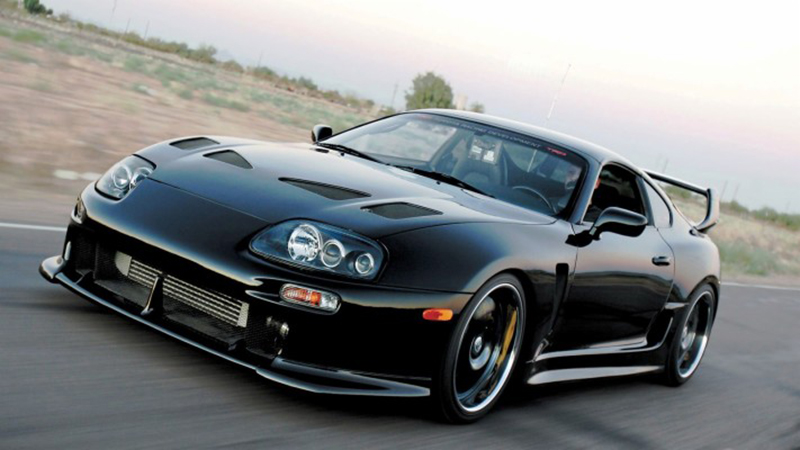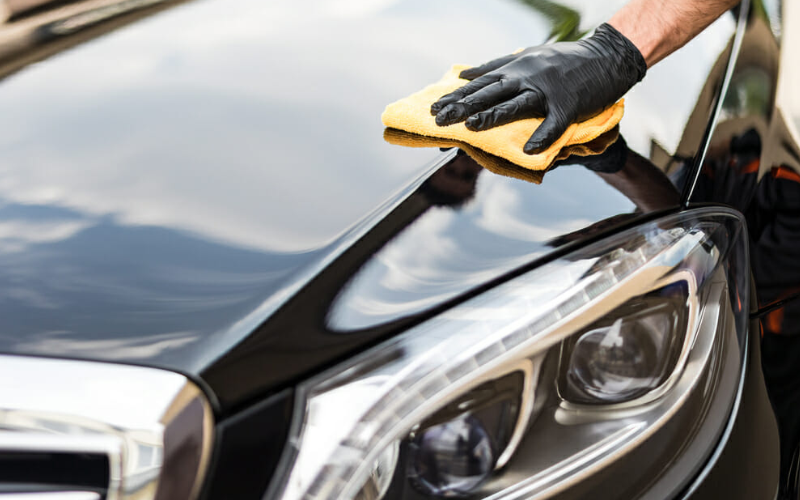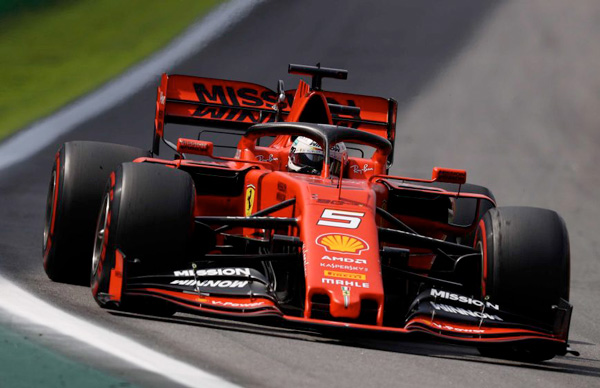When you’re starting out in the exciting world of car modification, it can seem like an entirely alien world. No matter how well you think you know cars, it’s a near certainty that experienced modders will make you feel like a novice. Sometimes you might feel like they’re speaking an entirely foreign language.
In today’s article, we’re exploring some of the important terminology and slang terms used by modders online and within their microcosms of car lovers. Get to grips with these words and you’ll find yourself able to integrate yourself into their world more easily, and perhaps even secure further advice and assistance for your own car modification project. Sooner or later the other modders will be saying of you: “Yeah, they can certainly turn a wrench.”
Popular Car Terms and Slangs:
1. Banger
The first in our list is an eminently practical item. “Banger” refers to an engine’s cylinder when it’s a 4- or 6-cylinder engine. It came about because of the tiny, controlled explosions that generate the power needed to make the engine pistons moved. These “bangs” give the cylinder its modding name. It seems, however, that gearheads don’t apply the term to larger engines with more cylinders. A “four-banger” or a “six-banger” is typically referring to a small car in the first place, so obviously there’s no need when looking at an 8-cylinder engine.
2. Burnout
This popular term refers to a maneuver that has become something of a controversy in car enthusiast circles. A burnout involves spinning the car’s wheels very fast while keeping the vehicle stationary in one place. The result of this action, besides the large amount of noise and rubber smells, is a great deal of smoke and heat being generated by the friction.
Why is it so controversial? Well, it really depends where people are doing it. Done in the safety and privacy of a racetrack or on private land doesn’t really pose any danger or problem. It’s when those gearheads go along to “cars & coffee” meets and start spinning up their tires creating a thoroughly unpleasant atmosphere to those just trying to look at nice Ferraris and Porsches while enjoying some coffee. Some events, like those in Houston, Texas go to great lengths to prevent their attendees from performing this maneuver now.
3. Drift(ing)
Have you ever heard of or seen the popular mid-1990s Japanese anime show called Initial D? This was the TV show that endeared a whole generation of young Americans to the Japanese motorsport of drifting. This unique sport started in Japan during the 1970s but has now become a worldwide pursuit. It’s a special type of driving technique turned competition involving a whole lot of oversteering around a track typically with five or six devilish turns, or possibly circular to produce the need for continuous drifting and turning.
Technically speaking, a “drift” refers to the maneuver of oversteering on purpose while losing traction in a controlled and deliberate fashion. Two popular methods are the lift-off and the clutch-kick method. Clutch-kick is the more established of the two, and involves the works by giving the car’s wheels a sudden burst of torque, which is what causes them to lose traction. The driver then enters the turn and accelerates, holding one foot on the clutch to increase RPMs, before quickly removing it again.
If you meet a fellow modder who is driving a Nissan Silvia, Subaru Impreza, Nissan 370Z or a Toyota 86 — to name but a few — then there’s a good chance that this modder is a drifter themselves. These are popular competitive models for the sport.
4. Euro
This term refers to a particular style of modification that is recognizable by its highly smoothed out features. Once it’s finished the car itself becomes rather unassuming because all of its badges and identifying trim points have been removed. Any and all seams around panels will also have been filled in. The wheels of a “Euro” style will typically be chrome in finish, and you can expect the car’s to have “Mad Lows” – see more below for this term.
The style was started in — surprise, surprise — Europe, and is really all about creating a clean, even and smooth look across the vehicle. One common feature you’re likely to see on a Euro car are door and trunk handles that have been smoothed down so that they are level and almost seem completely integrated into the car’s bodywork. Perhaps the Euro modders are just trying to emulate the Aston Martin?
5. Fitment
This term almost looks like a word made up by a child or non-native English speaker who is trying to describe something very specific. In fact, this term does specifically refer to the way in which the alloy rim sits with the wheel arch. The “original fitment” refers to that of the size and fit of the tires/arches as made by the OEM manufacturer.
Some modders have to make significant changes to their wheel arches if they want to achieve the perfect fitment for their modified car. Some will cut an amount of material away from the arch in order to make way for huge 21-22” alloys that glitter just right.
6. Gas Can
This term refers to a type of exhaust that some modders turn to for reasons perhaps known only unto them. To most of us, a “gas can” exhaust is something of a nightmare. They are large, excessively loud, and can usually be heard from seemingly miles away. You can likely now picture the gas can sitting at the rear of a tiny hatchback looking highly out of place. You can probably also imagine the noise it’s making as it disturbs the entire local equilibrium.
In the world of car modification, the gas can is a somewhat disparaging term. Experienced modders will expect to see it on the rear end of a “Ricer” (see below), but would never want it for themselves. It’s the vanity modification that impresses virtually no one — easy to install, therefore showing no technical flare, and totally unproductive other than for forming a cacophony that just makes the neighbors want to call the police.
7. JDM
This stands for “Japanese Domestic Market” and refers to cars that have been specifically produced originally for sale only in Japan. We think of car brands nowadays as being very international, but we sometimes forget the huge gulfs of difference that can exist between a brand or marque as it comes in one country compared to another. Some Nissans, Subarus and other Japanese giants were made one way for Japan, and another for the US.
Why is that? The chief reason is regulation in each individual country. Where the rules on turbos, engine size, noise generation and more might be one way in Japan, they may have much stricter rules in the US, and even then it can vary from state to state. Nissan, therefore, will make a certain car differently to match the regulations of the US market.
Over the years however, what started as a small number of track enthusiasts has grown into a large sector of buyers who now seek out JDM models to import to their own country. With some simple modification, JDM cars can become roadworthy almost anywhere, but can at least be modified for private use on the track. Their import is particularly popular in Australia, India and the UK where people drive on the left like their Japanese counterparts, so the cars are simple and convenient to import.
8. Mad Lows
This one is fairly straight forward really. As you might imagine, the term “mad lows” refers to where a car’s suspension is lowered to a perhaps unimaginable extreme. Lowering the car’s suspension is generally a popular thing to do, and you can lower it anywhere from 1 to 5 inches under normal circumstances. The lower you take it, the more it will likely cost you to do — possibly up to $10,000.
The wisdom of mad lows is also a subject of discussion among many modding fans. If you take it all the way down like that, what would you do if you encountered a speed bump? There are times when you have to know the limits of what looks good, and what just appears to be going too far. Mad lows are such that you have lowered the car to the point where you must be crazy.
9. OBD
Things can go wrong in your car, especially while you’re modding. In days gone by, when things went wrong, you had to dig deep, get under the car or close up to the engine to examine every nook and cranny for a possible error. It was usually a slow, painstaking process that could only be expedited by years and years of experience. The OBD system and scanning tool makes that very different.
OBD stands for “On-Board Diagnostics” and it’s a system that’s tied to your car’s main computer system. It sounds like something only new cars have, but the OBD system has been around since the mid-1980s, so virtually everything on four wheels these days has it. Using an OBD scanning device, you can interface directly with your car’s computer via a port under the driver-side dashboard. Once in, you can quickly bring up a full diagnostic of the engine, which will quickly reveal where problems are located and exactly what kind of problem it is.
These tools are also not just for professional mechanics, nor are they expensive. They’ve become both user-friendly and affordable. You can likely get a good one on Amazon for as little as $50.
10. Ricer
Earlier in the article we mentioned the “gas can” exhaust. That was an example of one modification that would make up the ricer — a modified car created solely for the purposes of making noise and looking poorly thought-out. The typical Ricer is likely a small hatchback made to sound like a tank. Most or all of the modifications made to it will be cheap and glaringly obvious or mismatched. Put quite simply, the ricer is the exact opposite of the far superior “Tuner” (see below)
Besides loud exhausts, what other mods make up the usual ricer car? It could be nonsensical flames or go-faster stripes, exterior neon lights, or wheels cambered to some ridiculous angle so that it looks like the car was squashed under a giant’s foot. You could say that most ricer mods are those that are done for the sake of modding, rather than to any particular style or function.
11. Sleeper
Of the four types of modified cars mentioned in this article — Euro, Ricer, Sleeper and Tuner — this one is without doubt the most unassuming. This type of mod program is usually undertaken by the gearheads who are the most technically minded. Sleeper cars are modified almost exclusively on the inside, with little or nothing done to the exterior beyond the bare minimum. The result is a car that looks incredibly pedestrian, even like some old clunker. Start it up, however, and you’ll soon have those illusions shattered.
In other words, the sleeper is all factory-made stock on the outside, but all aftermarket glory under the hood. Those modders are so in love with the technical aspects of their work, that they don’t even mind that the car looks unutterably boring and non-unique on the outside. One more practical application for sleeper cars has been found by, of all people, the police. Unmarked and marked police cars alike often don’t look much on the outside, but they are very fast and powerful thanks to their hardware. It’s cheaper to do things that way. Can you imagine the budget needed to put every cop in a Ferrari?
12. Spool Up
This has nothing to do with gathering wires or fibers into spools. If you’re a fan of science fiction, you might have heard “spool up” as something they do on starships when getting their hyperdrives or faster-than-light engines ready. Interestingly, this is somewhat closer to what modders mean.
To spool up the engine means to rev it much higher than normal. That might be just to create a massive amount of noise if you’re working with a ricer. On the other hand, it might also be a way of checking fuel pressure or air pressure from the exhaust. At any rate, when your mod buddy asks you to “spool it up,” it’s time to put the pedal to the metal.
13. Static (Vs. Air)
Static and Air both refer to types of suspension that are favored by different participants in the modding world. Static suspension refers to coilover suspension, whereas air suspension refers to those systems made up of air springs or air bags. Companies like Mercedes-Benz make a big point of highlighting their AIRMATIC suspension system as one that delivers superior handling, but among the modding community opinion remains somewhat divided.
The main benefit of static suspension is they are better for track performance. The dampening, rebound and spring rate are all adjustable, making it ideal for those who might need to make adjustments to suit different race tracks. They are also very affordable, typically costing around $500 or so for normal spec coilovers. They can range up to a few thousand dollars, but they remain the “budget-friendly” choice for many car mod enthusiasts.
Air suspension also has its benefits. First of all, air suspension is unbelievably flexible. It’s so flexible as to potentially eliminate height problems even for those who are driving a car with mad lows. Air suspension can also be adjusted via Bluetooth app, which makes it better for the less mechanically gifted among us who might not feel as good dealing with the physical adjustments to coilovers. One further plus point of air suspension is that it can hold the car even and steady even when there’s something bulky or heavy in the trunk. On a typical car suspension, that object would weigh the car down unevenly. Air suspension helps greatly with this problem, keeping the car in balance.
14. Tuner
In the minds of many modders, a “Tuner” is the spiritual opposite to a “Ricer.” Where the latter is clumsy, lacking in finesse and created purely for some delusional vanity, the former is a car that has been genuinely enhanced. A tuner is a modified car that has been “tuned up” to improve overall performance. This includes things like better suspension, more nimble and agile handling, greater acceleration, improved aerodynamics and more.
If you ever saw movies like The Fast and the Furious or anime shows like the above-mentioned Initial D, then you can get a better idea of what modders mean when they talk about a tuner. In short, a tuner is a modified car that has achieved a genuinely pleasing balance of enhanced performance as well as improved and pleasing aesthetics. Every mod was done with care and purpose, and the overall effect should carry a far-reaching appeal.
15. Turbo Lag
This may seem to be something of an oxymoron. If it’s “turbo” how can it also be lagging? This term refers to a phenomenon known to modders who have tuned their car’s V6 engine to perform more like a V8 or more powerful engine. The turbocharger works by taking exhaust gas and spinning a turbine that compresses the air that subsequently goes into the cylinders. This together boosts the power of the vehicle. This much you might have already known.
However, if you’ve turbo-boosted your V6 engine, you haven’t made it so that this process just happens instantly. It still takes time from the initial acceleration to the point where enough compressed air has made it into the cylinders to provide the power boost. That time in between initial acceleration and the turbocharger kicking in is known as the turbo lag.
If you’re interested in adding a turbo or improving your existing turbo, you’ll be glad to know that technological advancements have greatly reduced the lag time overall. At the top end of the scale, Ferrari has already managed to reduce the turbo lag time in the 488 GTB down to 0.08 seconds.
Turn a Wrench – Get Good at Modding
So, the main lessons to remember are:
- Learn to turn a wrench
- Don’t create a ricer
Car modifications go beyond simply boosting noise or aesthetics. Modding is about unlocking the true potential of a mass-produced almost “robotic” vehicle. All consumer cars are produced to identical specifications in factories, with many of their true abilities locked down or limited. Performing mods helps to open the car back up and realize what it can do. Furthermore, it’s a great way to personalize your car; make it your own. When you do it right, there are sure to be plenty of admirers who will remark that you certainly can “turn a wrench or two.”



